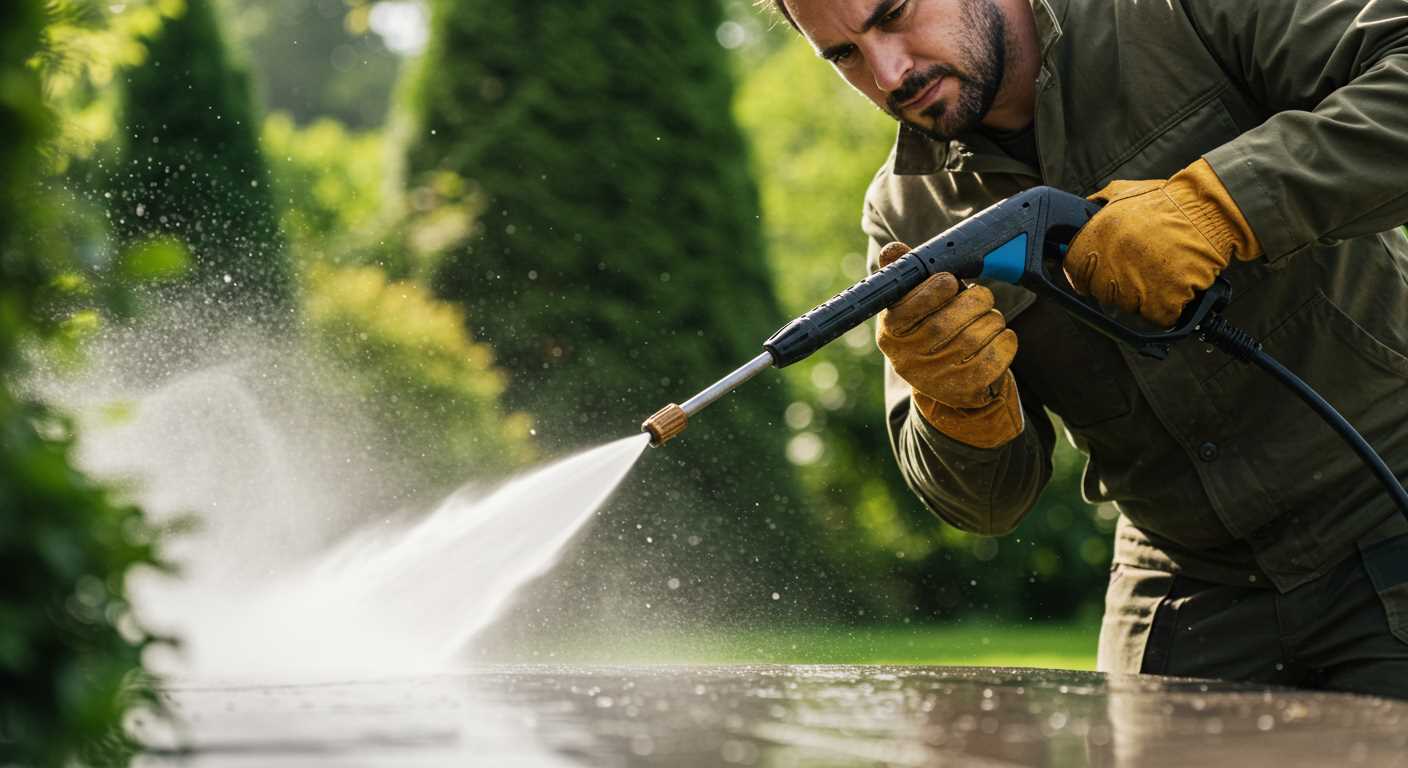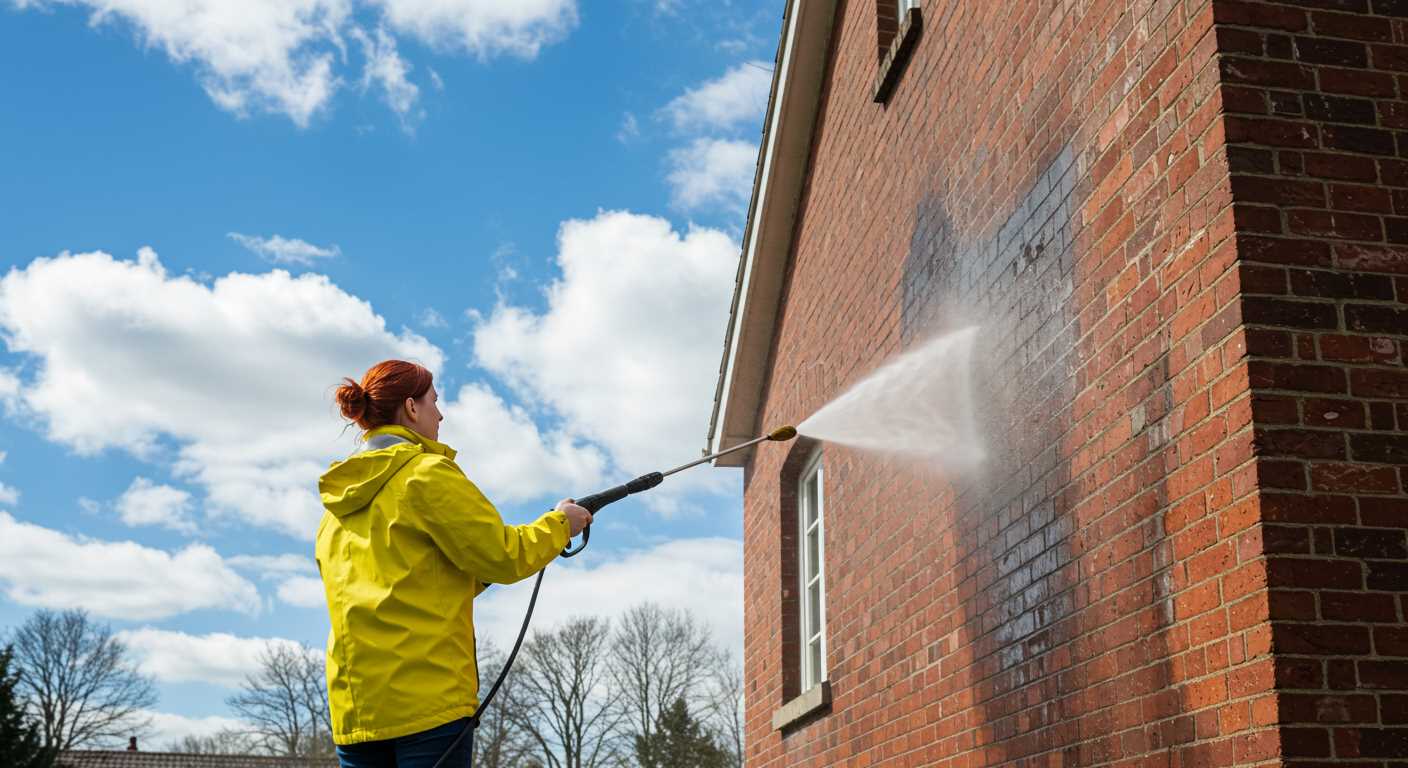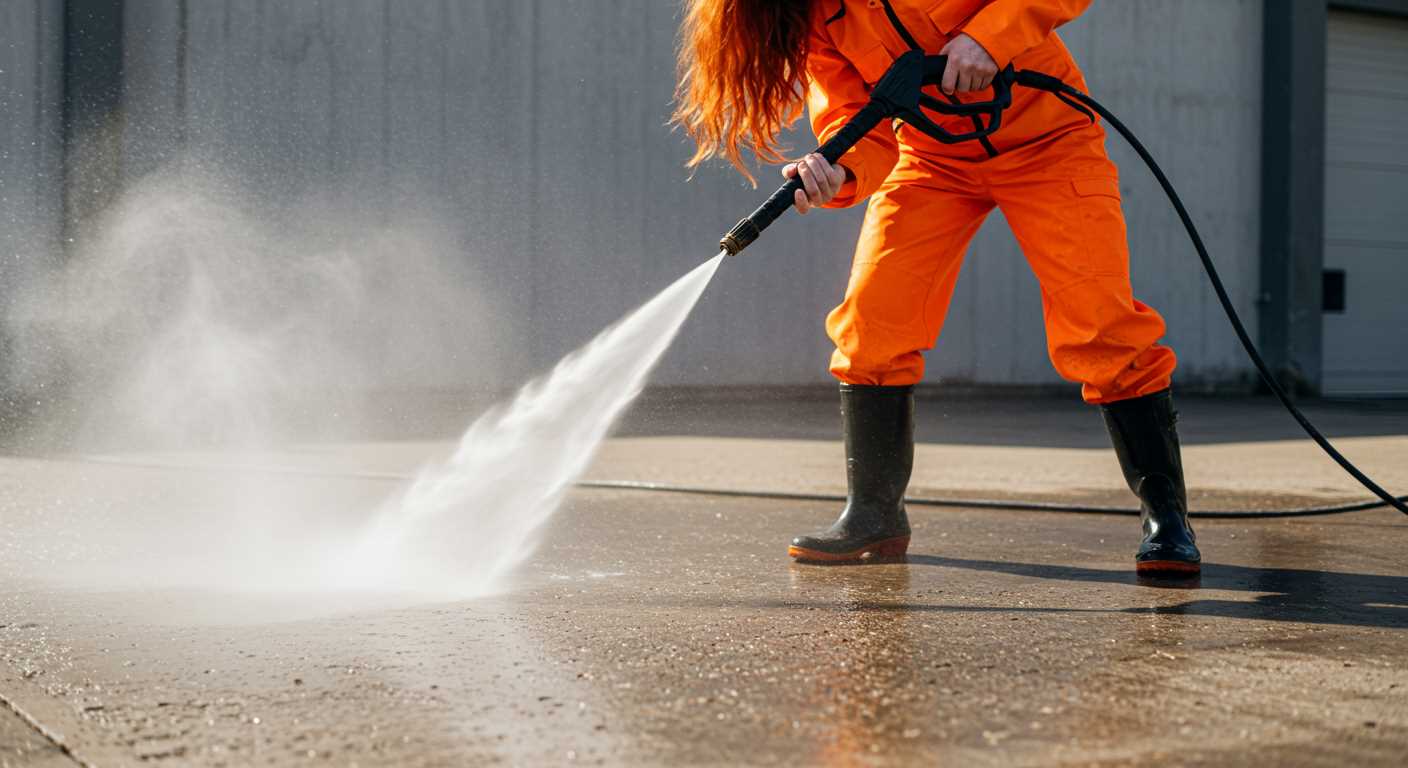



Prioritise motor power; a robust unit begins at 1500 watts for efficient performance. Higher wattage translates to increased water pressure, which is paramount for tackling stubborn grime and dirt.
Assess water flow rate, measured in litres per hour (L/h). A minimum of 500 L/h ensures that you can complete tasks swiftly without constant interruptions for refilling. This aspect is critical for larger areas.
Examine nozzle versatility. Adjustable, interchangeable heads allow you to switch between gentle rinsing and concentrated cleaning, giving you the flexibility to manage various surfaces, from delicate paint jobs to rugged concrete.
Consider the weight and portability of the model. Opt for something that remains manageable, especially if you need to transport it frequently or use it on multiple levels. Integrated wheels can significantly enhance mobility during operation.
Review the warranty and customer support offered. A solid warranty not only protects your investment but also indicates the manufacturer’s commitment to their product quality. Ensure that assistance is readily available should issues arise.
Lastly, scrutinise noise levels. Certain models operate more quietly, which is advantageous if you’re working in noise-sensitive environments. A sound rating below 85 dB is favourable for residential areas.
Understanding Pressure Ratings and Their Implications

Focusing on pressure ratings is crucial for achieving optimal cleaning results. Pressure is measured in pounds per square inch (PSI). A model with a PSI between 1300 and 1900 is suitable for delicate tasks like cleaning vehicles, while those ranging from 2000 to 3000 can handle tough jobs such as removing graffiti or stripping paint.
Be aware of the flow rate, indicated in gallons per minute (GPM). Higher GPM means more water delivered per minute, which can enhance cleaning efficiency. Ideally, you should choose a unit with at least 1.2 GPM for residential use; anything above 2.0 GPM is advantageous for more demanding applications.
Consider how both PSI and GPM work together, impacting cleaning performance. A combination of 2000 PSI and 2.0 GPM can effectively remove stubborn dirt, delivering a cleaning power rating (in cleaning units) of 4000–a valuable metric for comparing different models.
Pay attention to the nozzle types available. Different nozzles affect the spray pattern and pressure. A 0-degree nozzle provides a concentrated stream for tough stains, while a 25-degree or 40-degree nozzle delivers a wider spray for lighter tasks.
Evaluate the quality of the pump as well. A reliable pump will maintain pressure consistently over time. Look for models with either axial or triplex pumps, as they offer durability and better performance.
Your specific needs will determine the ideal specifications. For occasional use, a lower PSI and GPM might suffice, but frequent, heavy-duty tasks demand a more powerful unit. Understanding these ratings ensures you select the right equipment for your cleaning tasks, saving you time and effort in the long run.
Identifying the Right Flow Rate for Your Cleaning Tasks
Prioritise a flow rate between 1.5 to 2.0 gallons per minute (GPM) for most residential tasks. This range delivers adequate water output, enabling efficient dirt and grime removal without wasting excess water. For lighter projects like washing cars or patios, 1.5 GPM is sufficient. Intensive cleaning, such as driveways or siding, may require the higher end of the spectrum.
Understanding Applications

Determine the primary tasks. For delicate surfaces, a lower flow rate reduces the risk of damage while still providing enough pressure for effective cleaning. Conversely, hard surfaces such as concrete demand higher flow rates to rinse away debris quickly. Using the appropriate flow rate based on the surface type substantially enhances results.
Evaluating Performance Ratings
Keep in mind that flow rate must complement pressure ratings. A unit with a high PSI but low GPM may struggle to deliver the same cleaning effectiveness as a balanced model. Always consider both metrics together–higher flow rates typically correlate with quicker cleaning sessions, particularly when tackling extensive areas. Balance between GPM and PSI optimises performance and resource management.
Recognising the Importance of Motor Power in Performance
Look for units with motors rated between 1500 to 2000 watts for optimal power and versatility. Higher wattage generally translates to better performance, enabling efficient cleaning of various surfaces.
Here’s how motor power impacts your equipment:
- Cleaning Efficiency: A robust motor provides sufficient force to remove stubborn dirt and grime, especially on driveways and patios.
- Durability: More powerful machines tend to have better build quality and longevity, saving you replacement costs in the long run.
- Adjustable Pressure Settings: Higher wattage often allows for adjustments in pressure, accommodating different cleaning tasks.
- Faster Job Completion: Increased power leads to quicker cleaning times, boosting productivity if you have multiple areas to address.
Make sure to check the amperage rating as well; an efficient motor will typically work in harmony with a lower amp draw while providing the necessary output. A good range is 13 to 15 amps.
Finally, consider motor type: induction motors offer superior performance and longevity compared to universal motors, especially for extended use. Ensure an adequate warranty, as it reflects the manufacturer’s confidence in their product’s durability and power.
Evaluating the Build Quality and Durability of Components

Prioritise sturdy materials such as ABS plastic or metal housing, as these significantly expand longevity. A robust outer case can withstand the rigours of frequent usage, while a metal frame supports stability and reduces vibration.
Components to Examine
Focus on the pump material; brass or stainless steel outperform plastic in durability. Check the quality of hoses; reinforced rubber is preferable to cheaper alternatives, as it withstands higher pressures without cracking. Inspect the connections for solid fittings, as loose joints can lead to leaks or pressure loss.
Warranty and Support

A reliable warranty indicates confidence in build quality. Look for warranties that extend beyond one year, as they often cover essential components. Access to customer support during the warranty period also signals manufacturer reliability and provides peace of mind.
Considering portability features for easy manoeuvring
Pay attention to weight–select a model that’s manageable without compromising on performance. A unit weighing under 15 kg generally offers good balance between capability and ease of transport.
Wheels matter too. Look for sturdy, large-diameter wheels that can navigate uneven terrain. This feature facilitates smooth movement across driveways and gardens. Models with pivoting wheels enable easier turning, enhancing manoeuvrability.
Handle design and adjustability
Check the handle design; a telescopic or ergonomic handle increases comfort during use and transport. Some designs even fold down, making storage simpler and saving space.
Power cord and hose considerations
A long power cord (around 5 to 10 metres) reduces the need for extension leads, while a hose that extends further enhances your reach without needing to move the base unit constantly. Some options have reels for easy organisation, preventing tangling and damage.
Choosing a lightweight, portable model tailored to your particular cleaning requirements ensures not just mobility but also ease of storage.
Exploring Available Accessories and Attachments
Consider investing in a variety of accessories to enhance your cleaning capabilities. These attachments can dramatically increase the versatility of your equipment, allowing it to tackle various tasks more effectively.
Common Attachments
Look out for nozzles with different spray patterns. A rotary nozzle can significantly boost cleaning power for tough jobs, while a wide-angle nozzle is perfect for gentle rinsing. Other important attachments include foam cannons, which can help in applying detergent more evenly and effectively during cleaning.
Specialised Cleaning Tools
For specific applications, consider specialised brushes and surface cleaners designed for patios, driveways, or vehicles. These tools not only improve efficiency but also reduce the risk of damage to surfaces. Additionally, extension wands can help reach high or hard-to-access spots, making cleaning much simpler. Always verify compatibility with your model to optimise performance.
Analysing Warranty Options and Customer Support Services
Prioritise a manufacturer that offers a comprehensive warranty. Aim for at least a two-year warranty, which reflects the company’s confidence in its product. A longer warranty often indicates superior quality and durability.
Examine what’s covered under the warranty. Look for parts, labour, and service that encompass significant components like the motor and pump. Some brands may provide additional coverage for accessories, which can offer added peace of mind.
Evaluate customer support services. Reliable brands typically have multiple channels for support, such as live chat, email, and phone assistance. Choose companies with dedicated service teams that can quickly address issues and provide expert guidance.
Check online reviews specific to customer service experiences. Positive feedback regarding responsiveness and problem resolution indicates a trustworthy brand. Take note of any common complaints, as they may highlight potential long-term issues.
Consider the availability of replacement parts and accessories. A brand with an established network of suppliers or a robust online store for spare parts ensures that repairs and upgrades can be handled with ease.
Here’s a summary of key warranty and support aspects to consider:
| Factor | Recommendation |
|---|---|
| Warranty Duration | At least 2 years |
| Coverage Details | Motor, pump, key components |
| Customer Support Channels | Live chat, email, phone |
| Response Time | Quick and helpful assistance |
| Spare Parts Availability | Easy access to components |
FAQ:
What key features should I consider when buying an electric pressure washer?
When purchasing an electric pressure washer, you should evaluate several important features. First, pay attention to the pressure rating, measured in PSI (pounds per square inch), as higher PSI values typically mean more cleaning power. Next, consider the flow rate, expressed in GPM (gallons per minute), which indicates how much water the washer delivers. This will affect the efficiency of your cleaning tasks. Additionally, check for various nozzle options for different cleaning tasks, such as a wider spray for large surfaces or a narrower one for tough stains. Portability is another factor; look for a machine with wheels and a comfortable handle for ease of transportation. Lastly, review the warranty and customer support options, as these can give you peace of mind regarding your investment.
Is it necessary to buy additional accessories for an electric pressure washer?
While many electric pressure washers come with standard nozzles and a hose, you might find it beneficial to purchase additional accessories depending on your cleaning needs. For instance, a surface cleaner can enhance cleaning efficiency on driveways and patios by allowing you to clean large areas evenly. If you need to clean hard-to-reach places, consider acquiring a telescoping wand. Foam cannons are also popular for washing cars, as they help apply soap evenly. Remember to verify compatibility with your specific model before buying any accessories to ensure they will work properly.
How much maintenance does an electric pressure washer require?
Maintaining an electric pressure washer is relatively straightforward and mainly involves a few key steps. After each use, ensure that you clean the nozzle and detach the hose to prevent clogs. If the washer has an onboard detergent tank, rinse it out with clean water to avoid residue buildup. Periodically check the power cord for any signs of wear or damage, as this can pose safety risks. It is also wise to clean or replace the filter according to the manufacturer’s recommendations. Regularly checking for leaks and ensuring all connections are tight will prolong the life of your pressure washer. Keeping your machine clean and properly stored can significantly reduce wear and tear over time.










